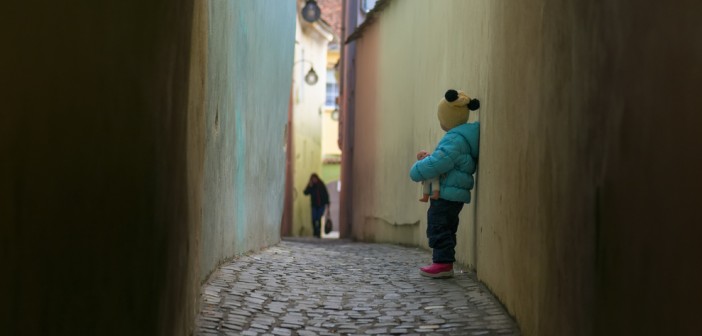Recently, in an authorised experiment with the parent’s permission, a plain-clothes policeman approached a number of different children in a park and asked them to go with him to find his “lost puppy.”
Some children started to go willingly. When quizzed later by their parents why they would go with a stranger, the children all had similar answers. “He wasn’t a stranger, he seemed nice.” “He said his name was Tom and he had a picture of a dog.” The idea that this person was a “stranger” (and that they shouldn’t leave with him) never occurred to them. It’s one reason why the “stranger-danger” message just doesn’t equip kids with a clear-cut, tangible skill. (original story source https://safelyeverafter.com/la_family_mag_Jan06.html)
“Don’t talk to strangers” has been in the kid’s rulebook top 3 since the beginning of time itself, right up there with “look before you cross the road” and “wash your hands after going to the toilet”. The only problem though is that “don’t talk to strangers” doesn’t allow for the fact that a child might actually need a stranger one day. If they are genuinely lost or in need of help and you’re not around, who are they going to go to? Instead it’s probably more helpful to teach our kids what kinds of strangers are safe, and what kinds of strangers are unsafe or what blogger Checklist Mommy refers to as a “tricky”person.
Also consider that 90% of all childhood sexual abuse occurs by someone the child KNOWS and has some kind of established relationship with – i.e., a family member or friend, a neighbour, or coach, most child abductors and abusers are not actually strangers.
A ‘tricky’ person is someone they know or don’t know who:
- Asks them for help (most adults don’t need help from children) or to go with them, without asking a trusted adult first.
- Asks them to keep a big secret, or tells them it’s ok to keep a secret from your parents.
- Asks them to break a family safety rule (if you don’t have family safety rules you need to put some in place)
- Asks them to do something they know is wrong and makes them feel uncomfortable.
Some easy ways to equip your kids be safe are to teach them:
- Don’t do anything, or go anywhere with any adults unless they ask your parents first. If they do need help from someone and you’re not around or they’re lost, another mum with kids is the best option. If they get lost at the shops tell them to go to the first mum with kids they see.
- They have the absolute right to say “No!” to anyone who makes them feel “uncomfortable” or “yucky”, or tries to touch them in any way that they don’t like.
- It’s not what a person looks like, but what they ask you to do, that makes that person unsafe.
As your child gets older, you can add to the conversation by talking about “tricky” friends — kids who lie, say mean things about other children behind their backs, and try to manipulate your child into doing things they don’t want to do (maybe this will be another blog post coming up soon). Replacing the stranger-danger lesson with information about “tricky people” is a smart way to begin teaching your children some basic safety concepts that will serve them in a much better way.


8 Comments
Pingback: The One Reason Your Amazing Blog Post Hasn’t Gone Viral (and 8 Things You Can Do About It)
Pingback: The One Reason Your Amazing Blog Post Hasn’t Gone Viral (and 8 Things You Can Do About It) | Alexa James
Pingback: The One Reason Your Amazing Blog Post Hasn’t Gone Viral (and 8 Things You Can Do About It) | Silvino Mills
Pingback: The One Reason Your Amazing Blog Post Hasn’t Gone Viral (and 8 Things You Can Do About It) – columbiasemsc
Pingback: The One Reason Your Amazing Blog Post Hasn’t Gone Viral (and 8 Things You Can Do About It) – Marketing Articles Hub
Pingback: The One Reason Your Amazing Blog Post Hasn’t Gone Viral (and 8 Things You Can Do About It) | MarketingTumbler.com
Pingback: The One Reason Your Amazing Blog Post Hasn’t Gone Viral (and 8 Things You Can Do About It) | Big fortune online
Pingback: The One Reason Your Amazing Blog Post Hasn’t Gone Viral (and 8 Things You Can Do About It) | DigitalMarketingBox.co